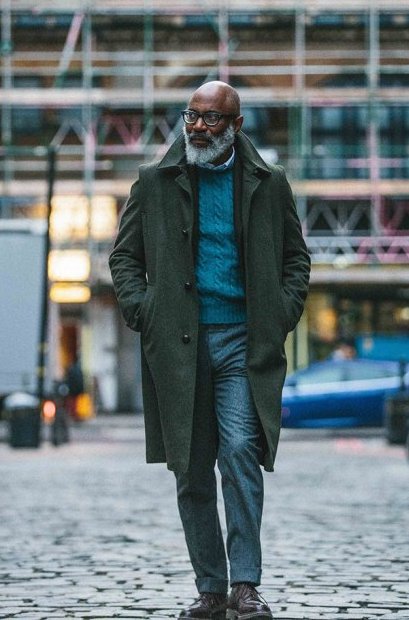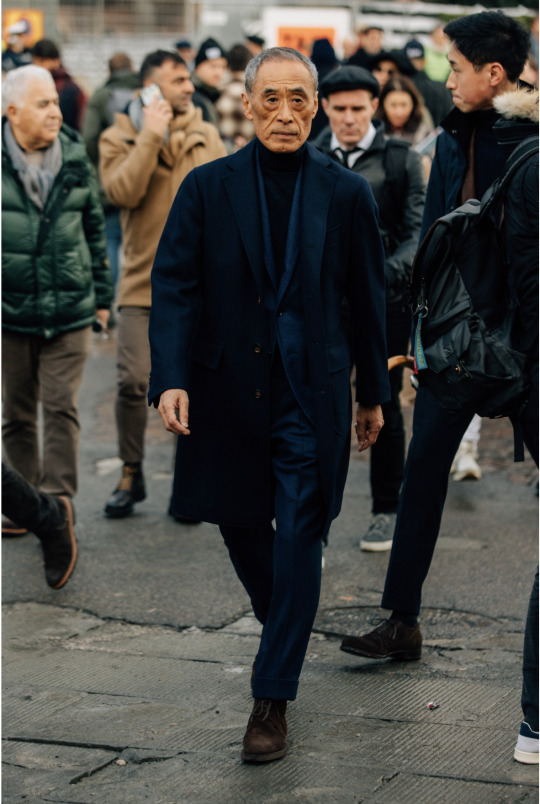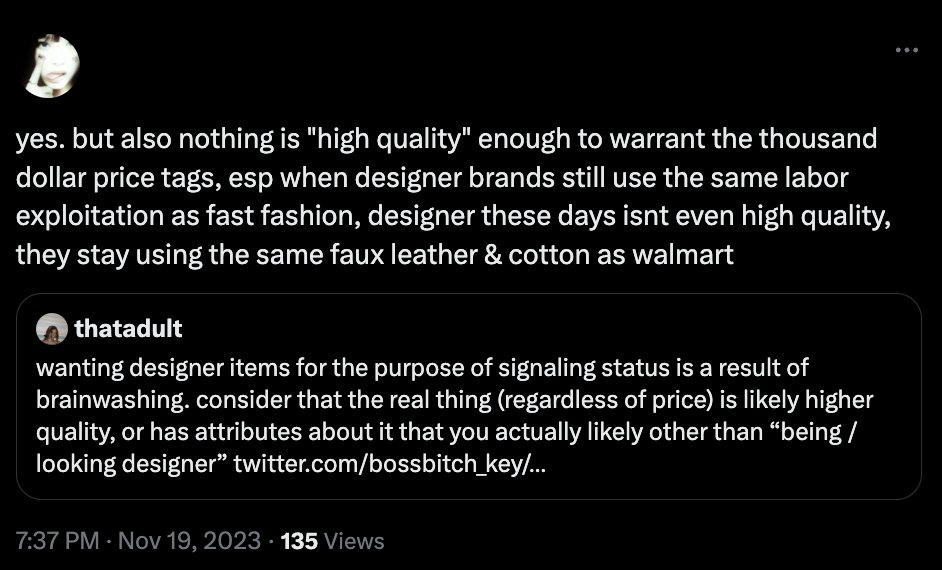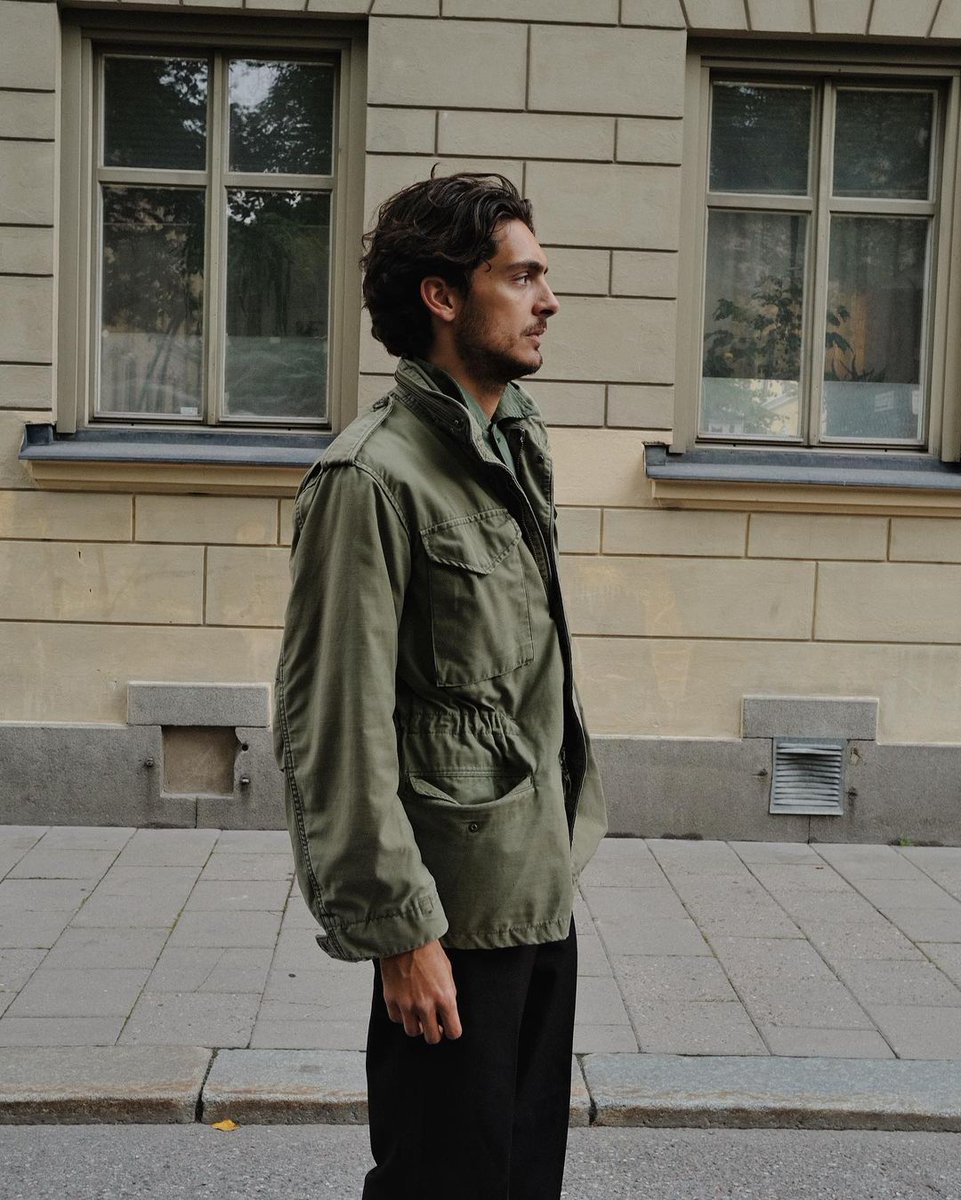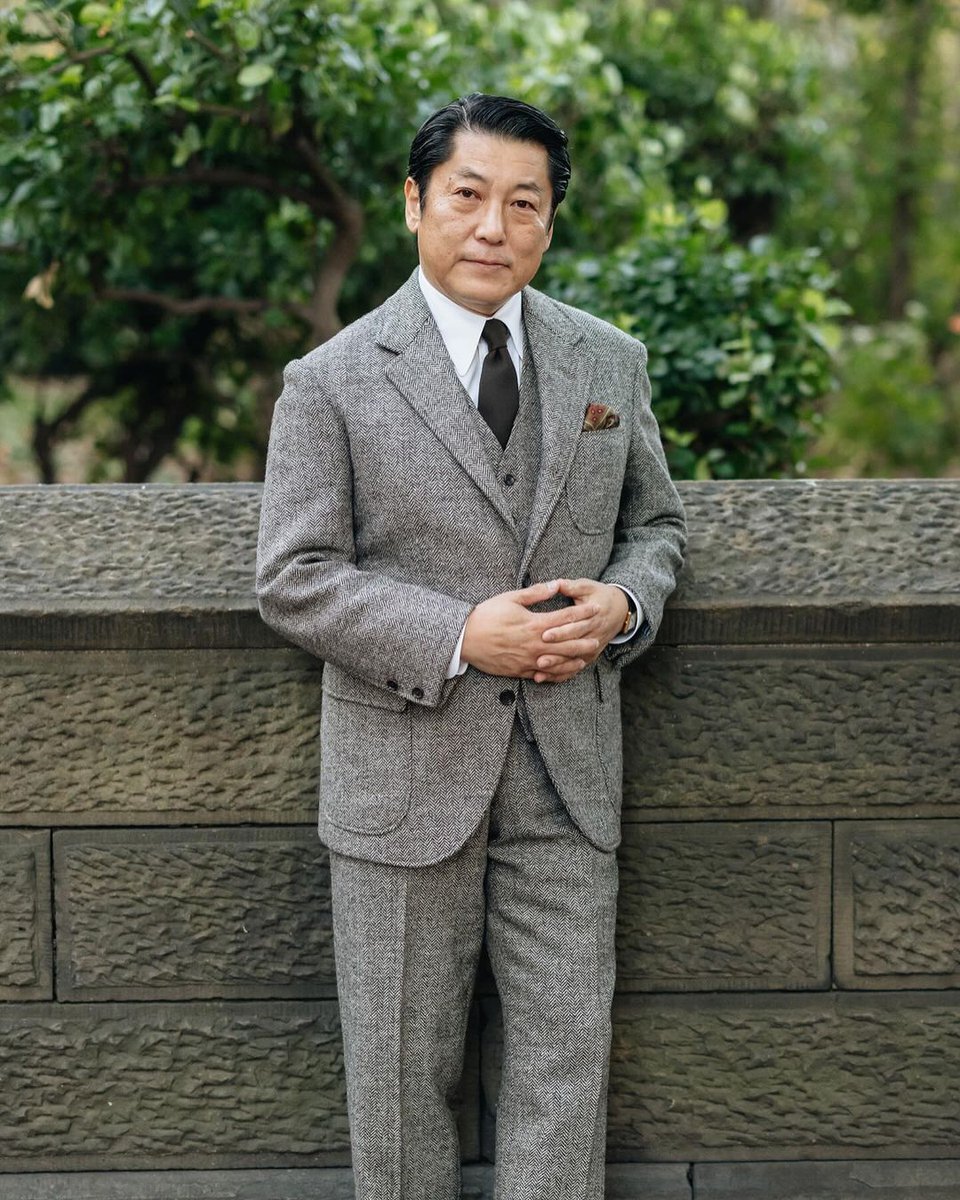He's wearing a ready-to-wear suit that was made to imitate certain Southern Italian tailoring details, typically done by bespoke tailors. Before I elaborate, I should note that there's nothing wrong with wearing RTW suits or machine-made versions of hand-executed details.
🧵
🧵
https://twitter.com/rhcm123/status/1728595747614884352
The pleating you see here is called a waterfall sleevehead. It's associated, but not exactly the same, with something called spalla camicia, which means "shirt shoulder" in Italian.




A normal suit will have a shoulder that looks like it's running under the sleeve (pic 1). A spalla camicia shoulder will look like the sleeve is running under the shoulder, not coming on top of it (pic 2). It's called a "shirt shoulder" because this is how your shirts are made.




This distinction has caused some confusion in my threads by people who may not be familiar with tailoring. They ask, "Why does he look like he has action figure arms?" It's because, in traditional tailoring, the sleevehead has a small ridge. 

But in Southern Italy, and specifically Naples, you often see a very soft shoulder line combined with a spalla camicia construction, such that you don't get any ridge. The idea here is to make the jacket look a little more "natural" on the body 

This has upsides and downsides. A slight ridge can help build up the shoulder without adding actual padding. It creates a more T shape. If you have narrow or rounded shoulders, a spalla camicia construction may not be flattering on you. (@SartorialNotes looks great here tho)




But this doesn't address why you see the pleating.
In Naples, great pride is taken to show a suit was handmade. On Savile Row, a suit is typically finished with a single row of handmade pick stitching. This prevents the edge from curling. The resulting dimples are very subtle.


In Naples, great pride is taken to show a suit was handmade. On Savile Row, a suit is typically finished with a single row of handmade pick stitching. This prevents the edge from curling. The resulting dimples are very subtle.


In Naples, you will often see two rows of pick stitching, especially on more casual garments such as a linen suit or a casual sport coat. They will also do it with a thicker buttonhole twist thread to really make sure you can see it. The handmade quality here is unmistakable.




Sleeveheads are always cut larger than the armhole. A more conservative tailor will gently distribute that fullness around the armhole. But in Naples, some will push the fullness toward the top, so you get that waterfall effect seen here. 

A small detour: this is not exclusive to Naples. Here is an Anderson & Sheppard sport coat from the 1980s or '90s. You can see how they put all the fullness under the arm (hence the pleating). This is called a "mutton leg." A&S doesn't do this anymore, but it was once done.




Back to Naples. The pleating is put into the top of the sleevehead to loudly announce that the garment was handmade. But the effect can be done better or worse, and whether someone likes the detail is a matter of taste. I'm ambivalent about it, but prefer subtly, like this: 

About ten years ago, as Southern Italian became more popular, details such as this started to show up in ready-to-wear. And sometimes, they were just not very well done. You can tell Hawley's suit is ready-made bc the pick stitching looks like it was done with a nailgun.




It's very rare to see hand-executed pick stitching on a ready-made suit. The detail is typically done with a Complett or AMF machine bc most people can't tell the difference.
The shirring on Hawley's suit (pic 1) is a poor imitation of the real thing (pic 2).


The shirring on Hawley's suit (pic 1) is a poor imitation of the real thing (pic 2).


Few people will notice these details. When shopping, it's more important to avoid things like this collar gap (see how the jacket collar does not touch his neck). But I thought I'd explain the weird sleevehead and why it looks like he has a pirate shoulder. 

• • •
Missing some Tweet in this thread? You can try to
force a refresh

 Read on Twitter
Read on Twitter




